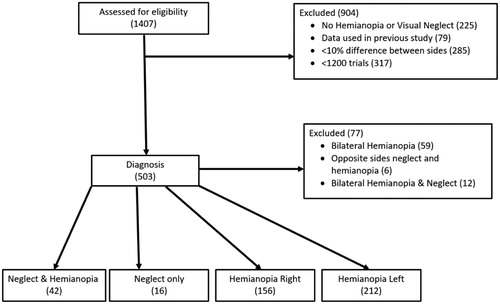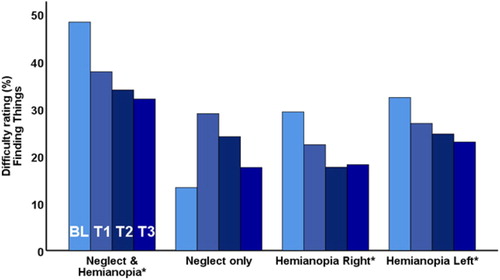Figures & data
Figure 2. Mean visual search times (VST) in seconds into the affected (dark grey) and unaffected (light grey) fields for the four patient groups over the four time points (BL = baseline; T1, T2 and T3 = Time points 1, 2 and 3). The three groups where the post hoc tests demonstrated a main effect of Therapy in are shown with a *.

Table 1. The unstandardized (raw percentage change) and standardized (Cohen’s d) effect sizes.
Data availability statement
An anonymized version of the behavioural data and basic demographic variables (that preserves subject anonymity) are available from the PI, Professor Alex Leff ([email protected]), ORCID id: 0000-0002-0831-3541.


